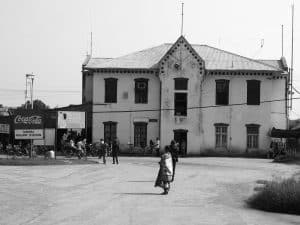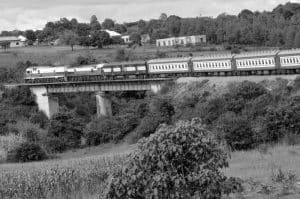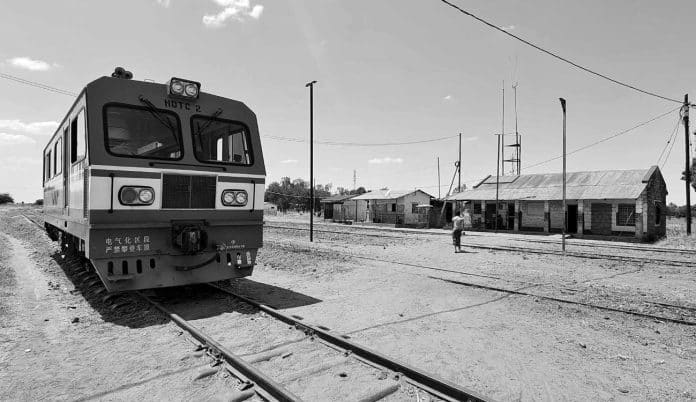Introduction to Tabora: A Historic Railway Hub
Tabora’s story is one of resilience, transformation, and the enduring spirit of the Tanzanian people. Once a thriving center of trade and a key player in the East African slave trade, the city has evolved over the years, emerging as a vibrant hub of cultural diversity and historical significance.
Today, Tabora stands as a testament to Tanzania’s rich heritage, offering visitors a unique opportunity to delve into the country’s past and explore its captivating colonial architecture, bustling markets, and fascinating historical attractions.
Tabora’s Significance on Tanzania’s Central Line
The Central Line, a vital railway network that traverses the heart of Tanzania, has been instrumental in shaping the development of Tabora. As a strategic junction on this important transportation corridor, the city has played a crucial role in facilitating the movement of goods, people, and ideas across the region.
The railway’s arrival in Tabora in the late 19th century marked a significant turning point in the city’s history, transforming it from a small trading outpost into a thriving commercial and administrative center. The influx of traders, administrators, and travelers from both within Tanzania and beyond brought a new energy to the city, fueling its growth and solidifying its position as a key player in the region’s economic and cultural landscape.
Historical Background of Tabora

Tabora’s history can be traced back to the pre-colonial era, when the region was inhabited by various indigenous tribes, including the Nyamwezi and the Sukuma. These communities were engaged in a vibrant trading network, exchanging goods such as ivory, salt, and agricultural products with their neighbors.
The arrival of Arab traders and the establishment of the Omani Sultanate in the early 19th century further shaped Tabora’s history. The city became a critical hub in the East African slave trade, with caravans passing through on their way to the coast. This dark chapter in Tabora’s past has left a lasting legacy, with the city’s role in the slave trade still a subject of historical study and reflection.
Exploring Tabora’s Colonial Architecture
One of the most striking features of Tabora is its well-preserved colonial architecture, which serves as a tangible reminder of the city’s past. As you wander through the streets, you’ll be greeted by a diverse array of buildings that reflect the various colonial influences that have shaped the city.
The German colonial administration, which controlled the region in the late 19th and early 20th centuries, left an indelible mark on Tabora’s built environment. The iconic Luhanga Palace, a grand structure that once served as the residence of the German governor, stands as a testament to the architectural style of the era, with its ornate facades and meticulously crafted details.
Alongside the German colonial buildings, you’ll also find structures that reflect the influence of the British, who took control of the region following World War I. The stately administrative buildings and the iconic Tabora Railway Station, with its distinctive red-brick design, showcase the architectural blend that defines Tabora’s urban landscape.
The Impact of the Railway on Tabora’s Development
The arrival of the railway in Tabora was a transformative event, catalyzing the city’s growth and firmly establishing its role as a key transportation hub. The construction of the Central Line, which connected the coastal regions to the interior of Tanzania, brought a surge of economic activity to the city, as it became a vital stop for the movement of goods, people, and resources.
The railway not only facilitated the transportation of essential commodities but also enabled the flow of ideas, culture, and knowledge. As the line connected Tabora to other major centers, the city became a melting pot of diverse influences, with its population growing to include a wide array of traders, administrators, and travelers from across the region and beyond.
This influx of people and resources fueled Tabora’s development, leading to the construction of new residential areas, commercial districts, and public institutions. The city’s infrastructure expanded to accommodate the growing population, with the construction of hospitals, schools, and other essential services.
Tabora’s Cultural and Historical Attractions
Tabora’s rich history is reflected in its diverse array of cultural and historical attractions, which offer visitors a unique glimpse into the city’s past and present. One of the must-visit sites is the Tabora Museum, which houses a fascinating collection of artifacts, photographs, and exhibits that chronicle the city’s evolution, from its pre-colonial roots to its colonial-era heyday and beyond.
Another highlight is the Luhanga Palace, the former residence of the German governor, which has been meticulously restored and now serves as a museum, showcasing the opulence and grandeur of the colonial era. Visitors can explore the palace’s ornate rooms, admire the intricate architectural details, and gain a deeper understanding of the city’s colonial history.
For those interested in the region’s indigenous heritage, the Nyamwezi Cultural Center is a must-visit destination. This vibrant hub celebrates the traditions, customs, and art forms of the Nyamwezi people, who have long been a dominant presence in the Tabora region.
Tabora’s Role in the East African Slave Trade
Tabora’s history is not without its dark chapters, and one of the most significant is its role in the East African slave trade. As a strategic hub on the caravan routes that connected the interior of Tanzania to the coast, the city played a central role in the movement of enslaved people, who were often forced to march hundreds of miles to the coast for transportation to the Americas and beyond.
The legacy of the slave trade is still evident in Tabora, with several sites and monuments dedicated to commemorating this tragic chapter in the city’s past. Visitors can explore the Slave Market Museum, which provides a sobering and thought-provoking look at the horrors of the slave trade and its lasting impact on the region.
While this history is undoubtedly a difficult one, it is an important part of Tabora’s story, and one that serves as a powerful reminder of the need for ongoing reflection, reconciliation, and a commitment to human rights and dignity.
Tabora’s Modern-Day Transformation and Tourism Potential
In recent years, Tabora has undergone a remarkable transformation, as the city has sought to balance its rich historical legacy with the demands of modern development. The restoration of colonial-era buildings, the revitalization of public spaces, and the emergence of a thriving tourism industry have all contributed to Tabora’s evolution.
Today, the city is poised to become a major draw for visitors, offering a unique blend of historical, cultural, and natural attractions. From the well-preserved colonial architecture to the bustling local markets, Tabora provides a captivating glimpse into Tanzania’s past, while also showcasing the vibrancy and resilience of its people.
The city’s strategic location on the Central Line also makes it an attractive destination for travelers exploring the wider region. Tabora serves as a convenient base for exploring the nearby Ugalla Game Reserve, a vast wilderness area that is home to a diverse array of wildlife, including elephants, lions, and a variety of bird species.
As you plan your journey to Tanzania, be sure to include Tabora on your itinerary. Discover the city’s rich history, immerse yourself in its vibrant culture, and experience the warm hospitality of the Tanzanian people. Unlock the secrets of this historic railway hub and let its captivating story inspire your own travels.
Getting to Tabora and Travel Tips

Reaching Tabora is relatively straightforward, as the city is well-connected to the rest of Tanzania through a variety of transportation options. The Tabora Airport, located just a few kilometers from the city center, offers regular flights from Dar es Salaam and other major hubs, making it a convenient entry point for visitors.
Alternatively, you can travel to Tabora by train, taking advantage of the Central Line that runs through the heart of the city. The iconic Tabora Railway Station is a hub of activity, with trains connecting the city to destinations across Tanzania, including the coastal regions and the northern safari circuit.
For those who prefer to travel by road, Tabora is accessible via a network of well-maintained highways and buses that connect it to other major cities in the country. The journey can be a rewarding experience, as you’ll have the opportunity to witness the stunning landscapes and rural communities that dot the Tanzanian countryside.
Regardless of how you choose to reach Tabora, be sure to pack comfortable walking shoes, sun protection, and a sense of adventure. The city’s compact size makes it easily navigable on foot, allowing you to immerse yourself in the sights, sounds, and rhythms of daily life.
Conclusion: Tabora’s Rich History and Promising Future
Tabora’s story is one of resilience, transformation, and the enduring spirit of the Tanzanian people. From its humble beginnings as a trading outpost to its pivotal role as a strategic railway hub, the city has weathered the storms of history, emerging as a vibrant and captivating destination that offers visitors a unique glimpse into Tanzania’s past and present.
As you explore Tabora, you’ll be struck by the city’s rich tapestry of cultures, its well-preserved colonial architecture, and its deep connection to the region’s indigenous heritage. Whether you’re drawn to the city’s historical attractions, its bustling markets, or its natural wonders, Tabora is sure to leave a lasting impression, inspiring you to delve deeper into the captivating story of this remarkable Tanzanian hub.
For more articles related to Railway and train travel Tanzania, click here!

































